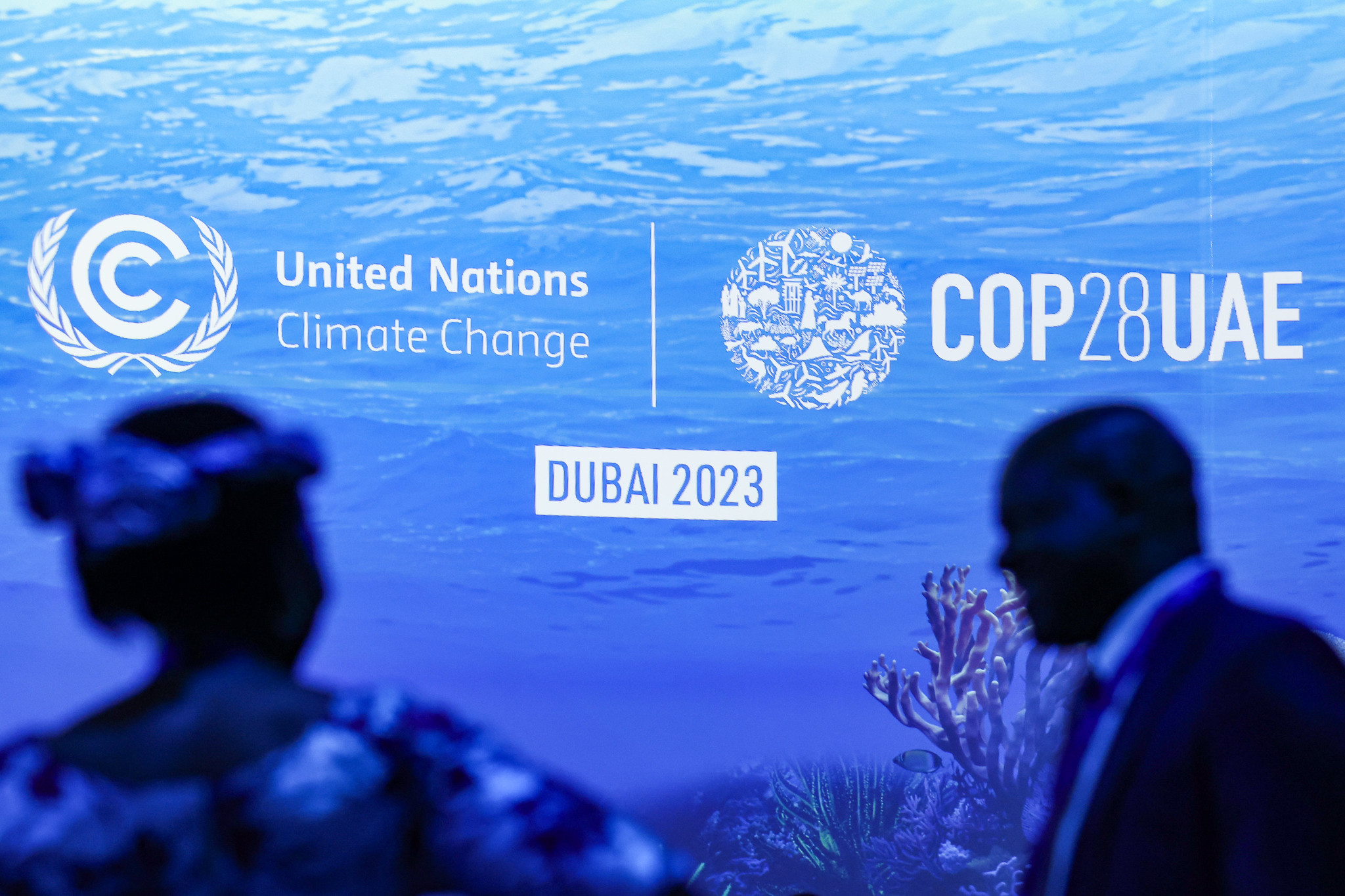2023-12-14
By Jeremy Gaunt
Here’s the money. There’s the target. How do you get the former to the latter?
This is not as easy a question to answer as it might appear, especially when it relates to climate change, biodiversity, and Indigenous Peoples. To see why, look no further than the latest calculations from the Forest Tenure Funds Group.
The group has been tracking the $1.7 billion committed at COP26 in 2021 to support the land tenure rights and forest guardianship capabilities of Indigenous Peoples and traditional communities. The money was pledged by several governments and some of the world’s leading philanthropists.
Two years on – at this year’s COP28 UN environment summit in Dubai – it was announced that while roughly half of the money has been allocated, only 2.1 percent of it has gone directly to Indigenous Peoples and traditional communities. This amounted to $15.4 million out of $815 million disbursed.

Christopher Pike/COP28
To say this is a disappointment to indigenous groups and their supporters would be an understatement, albeit that it did not come as a surprise.
“These resources are not reaching Indigenous Peoples,” Olivia Bisa Tirko of the Autonomous Territorial Government of the Chapra Nation in Peru said bluntly.
Her views, expressed at one of several side events on the issue at COP28, reflected the widely held position of Indigenous Peoples and their partners that it is the guardians themselves who know how best to use the funds to protect their environments, not top-down, outside organisations and governments.
Missing the mark
Indeed, Nonette Royo, Tenure Facility’s executive director, suggested at a different COP28 event that the lack of direct funding ran contrary to the funders’ design. Already, new indigenous-led funds are gearing up to protect rights and support conservation in the Amazon and other threatened areas but require longer-term financing.
“The pledge was purposely given to Indigenous Peoples and local communities, who are the guardians of nature,” she said.
There are numerous reasons given for the money not going directly to Indigenous Peoples despite plentiful evidence that they are invaluable in protecting and restoring lands to the benefit of Earth’s environment.
"These resources are not reaching Indigenous Peoples"
Government donors argue, for example, that such groups do not have the capacity to receive the money and allow for its use to be tracked. Many foundations also have a constitutional need to manage their donations.
And sometimes, it is simply bias, or at least ignorance.
Constance Okollet, who chairs the Osukuru United Women Network in Uganda, told one of the COP28 side events that while indigenous women often are the main guardians of their lands, outsiders are not used to such an idea.
“Most of the funders think that the local women, the local grassroot women, don’t know how to use money,” she said. “Most people used to say that men know better than women.”
Okollet said there is also a large cultural gap between donors and recipients, with the former often being university educated with set skills in writing proposals.
“For us, the indigenous women, we write our proposals on the ground,” she said.

Kiara Worth/COP28
Money where it’s needed
It does not have to be this way. Indigenous groups across the world are building the capacity to gather the money and spend it on what is needed, sometimes through local or regional funds.
And there are intermediaries that work directly with Indigenous Peoples rather than top-down governments or NGOs.
Royo emphasised Tenure Facility’s history of working with Indigenous Peoples on the ground to ensure their legal rights to traditional lands, to formalise what she said was a connectedness to nature that’s recognised by government.
“It allows people who are stewarding and guiding (their environment) to be at the table to express what it is that they know,” she said.
Since the COP26 pledge, Tenure Facility has doubled its delivery of support for tenure rights to indigenous-led groups and other partners to around $24 million per year. In 2024, Royo said, Tenure Facility expects to be involved in 36 projects in more than 20 countries.

Margaret Rugadya, Tenure Facility
The kind of work undertaken was outlined by Margaret Rugadya, Tenure Facility’s Africa Region coordinator. It includes supporting Indigenous Peoples to recognise conservation reserves, to create ecological corridors between conservation hotspots or protected areas in the countries.
“But we know that it’s not sufficient to give you a (land) title, you need more to govern what you have secured,” she said.
“You need to have the capacity to engage internally with what you have but also externally for those who are interested in the resource that you have,” Rugadya said.
Rugadya works directly on building local capacity, mapping lands accurately, and developing ways to recognise the traditional knowledge that exists.
Articles